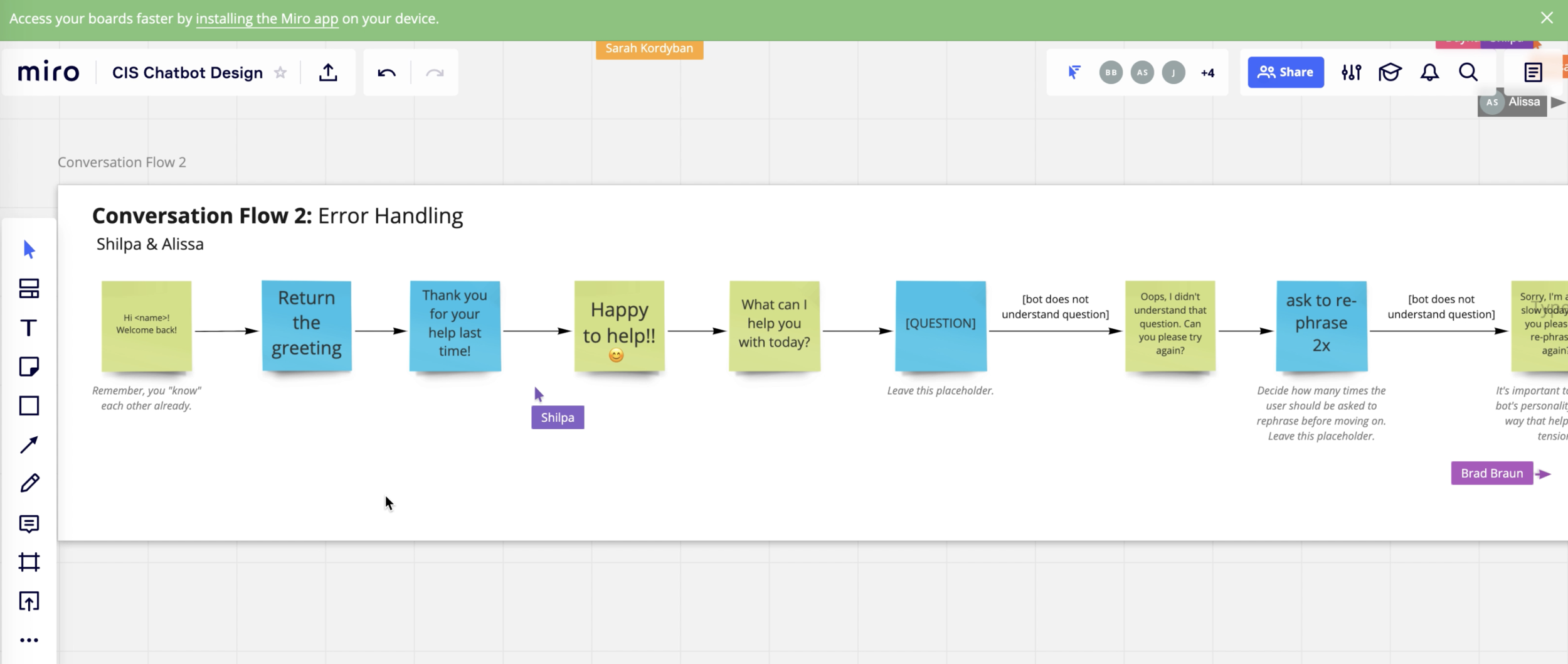The business world is becoming more digital every day. Enterprises are continually developing new strategies to better engage their customers in the right way and at the right time. Interacting with a large number of people requires a considerable amount of time and human resources.
With significant advancements in machine learning, artificial intelligence, and other technologies, such as natural language processing, new intelligent applications are being introduced to expand and enhance the digital horizons of communication with prospects and customers. Chatbot applications are an example of this trend and represent a viable option for many enterprises. At ConvergentIS, we wanted to lead by example by designing and prototyping an internal chatbot with the purpose of discovering accurate use cases for future service offerings for our clients.
An Important Tool for Your Business
Arguably, the major goal for any business is to create a frictionless experience for customers and prospective customers. Whether that’s through an application or on the company’s website, meaningful customer engagement is what drives future sales and marketing success. Businesses also strive to improve internal workforce efficiencies by providing resources in the form of intelligent technology, including chatbots. Conversational AI (artificial intelligence) has recently been pushed into the limelight by SAP as a way of highlighting its intelligent enterprise platform. Those who already run SAP know that these additions can come with some large subscription costs, so it was important for our team to determine the best use and design for internal chatbot technology so that we could best advise our customers. But first, let’s discuss some chatbot misconceptions that we discovered while designing and prototyping our first chatbot.
AI Misconceptions
There are some common chatbot misconceptions that were highlighted during our design and prototyping phases. The first was that chatbots are quick and easy to develop. While it is true chatbot prototypes can be developed quickly, they often fail fast if they are deployed without the proper design or programmed FAQs. During our chatbot design workshop, it was quickly realized that dialogue refinement would be crucial to a chatbot’s success for our internal systems and for our clients. Users typically don’t want to deal with a chatbot that doesn’t execute the right questions or answers, and neither would our internal team. The second misconception was that because chatbot technology is conversational AI, a bot can eventually program itself. Although cool, this wouldn’t be the case. Chatbot automation boils down to machine learning and programmed algorithms. While machine learning can be refined with larger data sets of experience, it still requires a human at the center to intelligently interpret data, apply the right algorithms, and make corrections.
The Importance of Design
The first phase of our investigation into chatbot technology reinforced the importance of a great user-centric design. We can continue discussing the features and relevance, but what really matters to our customers is a great design that provides the right solution for their business needs. The best way for our team to begin the design process was with a remote design thinking workshop, to dig deep into our business requirements and start off with a great chatbot design. This helped our team determine and prioritize the core functionalities of our own internal chatbot MVP. What we discovered, was the critical personality features, conversational brevity, and how far we should take our product in scope.
For more of our workshop details, check out our Remote Design Workshops blog!
Our development team was furnished with our finalized design and created an internal prototype within a defined scope. The result was a successfully orchestrated remote internal design workshop, a final proof of concept for our future chatbot service offerings, and a sizeable amount of content for marketing campaigns to support an external customer-facing launch.
Avoiding Missteps Using Design Thinking
Effective chatbot design and programming will have the greatest return on investment for any enterprise over time by using the right implementation templates and avoiding missteps. By beginning the process with a design workshop, our team was able to construct the user persona, the bot persona, define relevant use cases and develop meaningful conversational flowcharts. Picture a regular company zoom call but with the added magic of interactive design boards like Miro and a great workshop facilitator. During this two-day, remote design workshop the workshop facilitator placed our team into groups and the goal was to use different perspectives for three pre-defined conversation structures between a user and a chatbot. This proved to be a crucial design step for our chatbot prototype because each dialogue stream was also used to determine more intents and corresponding entities that we may have missed. Also, obtaining more than one conversation stream was very important for our internal A/B testing. This way, we were also able to test chatbot error handling.

-
Personality framework
-
User persona template
-
Chatbot template
-
Conversation Design
-
Dialogue flowchart
A Growing Intelligent Enterprise

